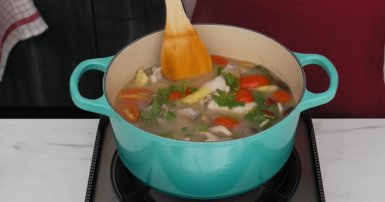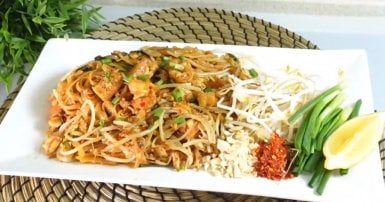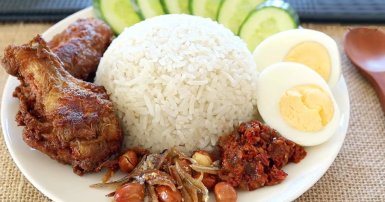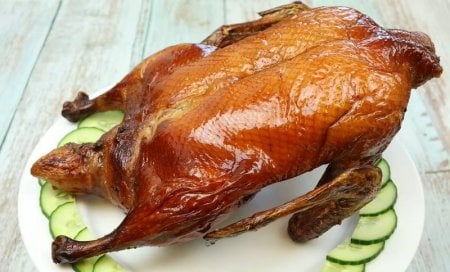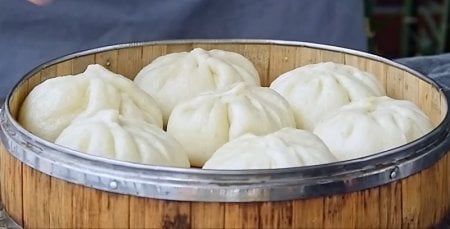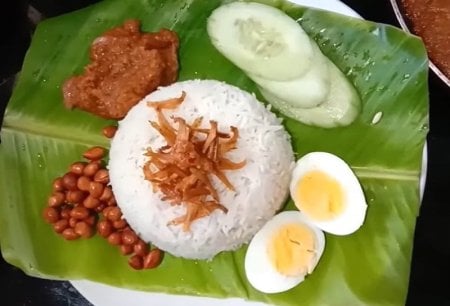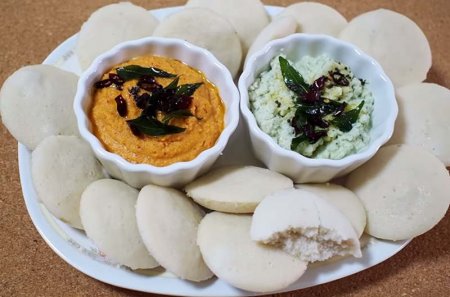Embark on a culinary adventure with Thai curries, a symphony of flavors that captivate the senses. Thai cuisine's soul resides in its curries, a harmonious blend of aromatic herbs, spices, and coconut milk. From the fiery red to the mellow yellow and the vibrant green, each curry tells a tale of Thailand's diverse culinary heritage. Immerse yourself in the rich, complex profiles of Panang, Massaman, and Green curries, where tender meats or vibrant vegetables absorb the essence of lemongrass, galangal, and kaffir lime leaves. Thai curries promise a sensory journey, where every spoonful unveils a burst of authentic Southeast Asian delight.
Massaman Curry
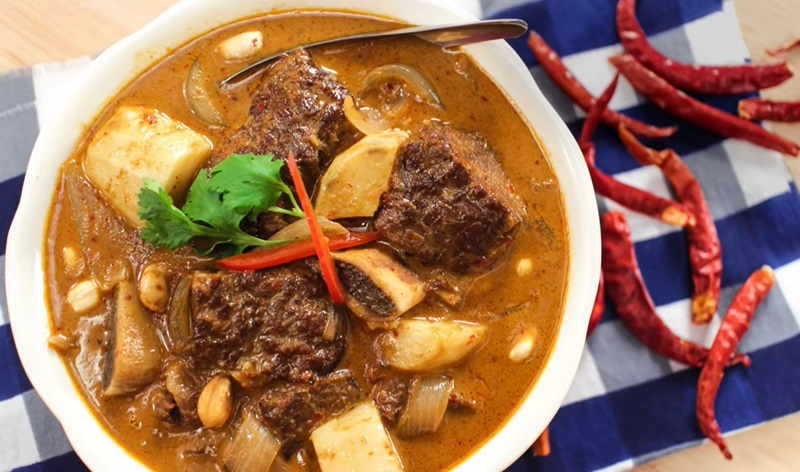
Massaman curry, a Thai culinary masterpiece, brings together a delightful fusion of flavors, blending influences from the Indian Subcontinent, Persia, and the Malay Archipelago. This rich and mildly spicy curry incorporates a unique blend of aromatic spices, including cloves, cardamom, cinnamon, star anise, nutmeg, cumin, bay leaves, and mace, alongside traditional Thai ingredients such as coriander, lemongrass, shrimp paste, galangal, shallots, white pepper, chili peppers, and garlic.
The heart of massaman curry lies in its hearty mix of chicken or other meats, combined with onions, potatoes, and peanuts. The creamy richness is derived from the luscious coconut milk and cream that forms the curry's base, a common characteristic in many Thai culinary creations. Recognized globally for its exceptional taste, massaman curry earned the top spot in CNNGo's 2011 list of the World's 50 Most Delicious Foods and retained its esteemed position in the updated 2018 version. This illustrious dish stands as a testament to Thailand's culinary brilliance, showcasing the art of blending diverse influences into a harmonious and delectable symphony of flavors.
Phanaeng
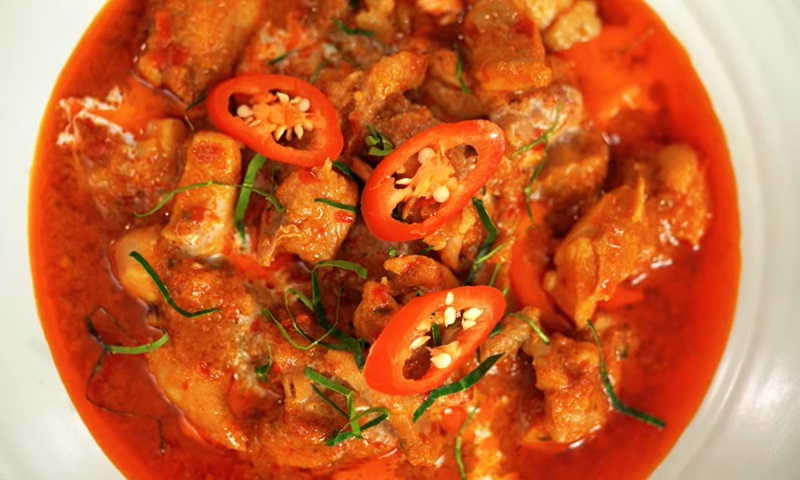
Phanaeng, a luscious red Thai curry, stands out for its thick, sweet, and salty profile, elevated by the vibrant zest of makrut lime. This delectable curry has a rich history, with its earliest mention found in Mom Somchin Rachanupraphan's 1890 book, Tamra Kap Khao. One of its celebrated renditions is the pork phanaeng, a dish cherished for its sumptuous flavors.
Typically savored with rice in Thailand, phanaeng curry offers a unique sensory experience with its robust taste and aromatic notes. While the precise origin of the term phanaeng remains elusive, some speculate its connection to the Malay word panggang, denoting grilled. The curry's enticing blend of flavors, combining sweetness, saltiness, and the citrusy essence of makrut lime, has established phanaeng as a culinary gem. Its enduring popularity attests to its place in Thai gastronomic heritage, making it a must-try for those seeking a harmonious fusion of distinctive Thai flavors.
Green Curry
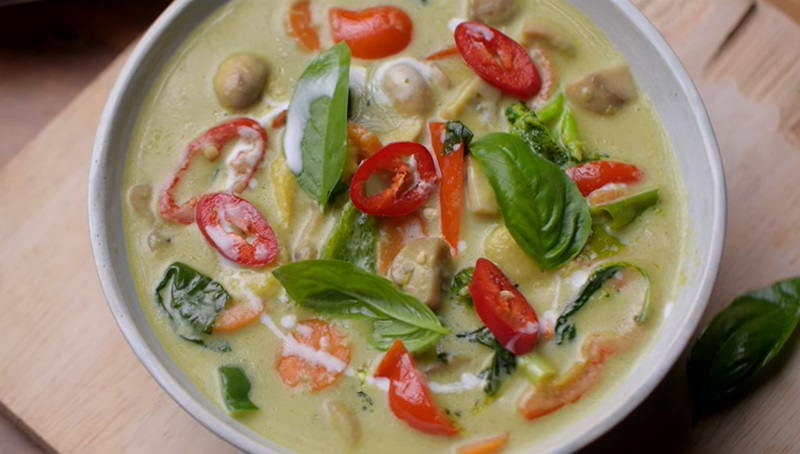
Green curry, a culinary jewel hailing from central Thailand, stands out for its vibrant hue derived from the infusion of fresh green chilies. Contrary to the name, the term "sweet" in Thai refers to the color green itself rather than the taste of the curry, resulting in a visually appealing, creamy mild green or "sweet green."
Rooted in the tradition of Thai cuisine, green curry showcases a dynamic interplay of flavors and textures. Coconut milk forms the luscious base, while the addition of fresh green chilies imparts a pungent and invigorating spiciness. The unique combination of ingredients, including aromatic herbs and spices, adds depth to the curry's profile.
One of the remarkable aspects of green curry is its adaptability, with the precise ingredients varying across households and regions. While not inherently sweeter than other Thai curries, it distinguishes itself with a robust, bold flavor profile, often featuring a more pronounced spiciness than milder red curries.
Whether enjoyed with rice or noodles, green curry stands as a testament to the exquisite artistry of Thai culinary traditions, captivating palates around the world with its enticing color and tantalizing taste.
Thai Curry
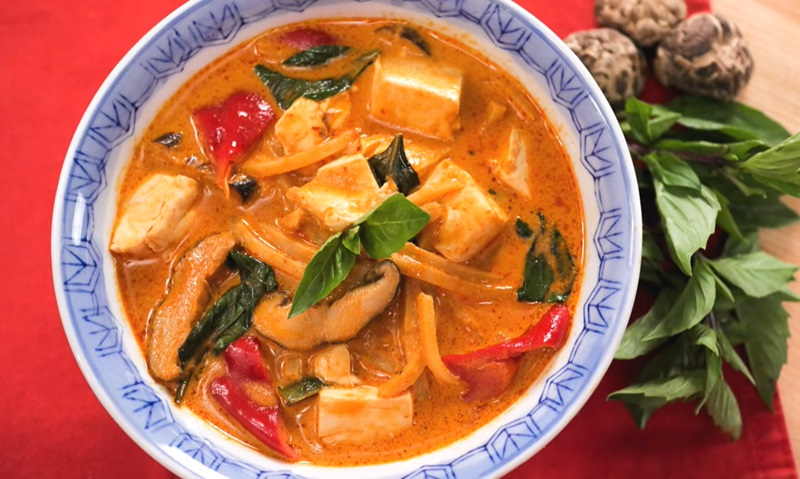
Thai curry, a celebrated creation in Thai culinary repertoire, is a harmonious medley of flavors, bringing together curry paste, an array of proteins such as seafood or meat, coconut milk or water, and a vibrant assortment of vegetables or fruits, all elevated by the infusion of aromatic herbs. This culinary masterpiece distinguishes itself from its Indian counterparts through a distinctive emphasis on herbs and aromatic leaves, steering away from the conventional blend of spices.
At the heart of Thai curry lies the artful combination of ingredients, carefully curated to achieve a symphony of taste and texture. The curry paste, a cornerstone of the dish, contributes depth and complexity, while coconut milk or water imparts a rich and velvety base. The choice of proteins and vegetables adds layers of flavor, creating a sensory experience that captures the essence of Thai cuisine.
The unique character of Thai curries is deeply rooted in the regional variations and local adaptations, showcasing the diverse culinary landscape of Thailand. From the fiery red curries to the vibrant green creations, Thai curry stands as a testament to the country's culinary creativity, inviting enthusiasts worldwide to savor its delightful and aromatic allure.
Yellow Curry
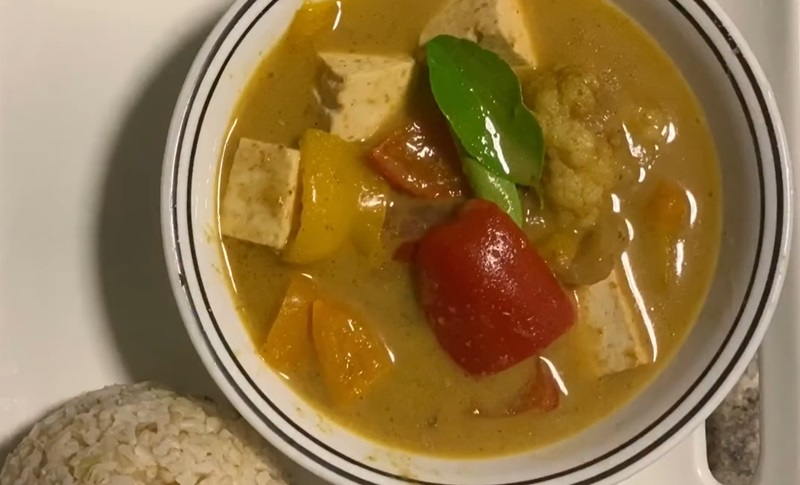
Yellow curry, a jewel in the treasure trove of Thai cuisine, weaves together a tapestry of exotic spices and aromatic herbs, creating a flavorful symphony that captivates the senses. Crafted from a distinctive blend, the ingredients include mace, turmeric, fenugreek, ginger, cumin, coriander, garlic, lemongrass, salt, bay leaf, cayenne pepper, and cinnamon. This masterful composition reflects the culinary ingenuity of Thailand, where each component plays a vital role in shaping the character of the curry.
Notably milder compared to its Thai curry counterparts, the allure of yellow curry lies in its balanced spice profile, deriving its golden hue from the vibrant turmeric. The careful curation of ingredients ensures a harmonious blend of flavors, with the gentle warmth of cayenne pepper and the earthy notes of cumin and coriander contributing to the curry's nuanced taste.
Yellow curry, a culinary gem, beckons enthusiasts to embark on a gastronomic journey through the rich tapestry of Thai flavors. Its versatility and mild spice profile make it an inviting introduction to the world of Thai curries, inviting palates to savor the artistry of this aromatic and captivating culinary creation.
Red Curry
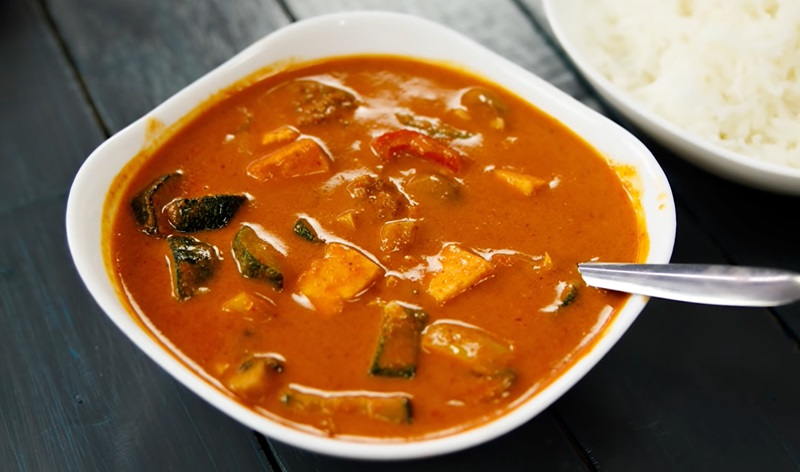
Red curry, a vibrant and iconic Thai culinary creation, emerges as a delightful fusion of red curry paste, velvety coconut milk, and a medley of savory ingredients. This Thai masterpiece invites a symphony of flavors, often featuring succulent meats like pork, duck, shrimp, chicken, beef, or embracing a vegetarian twist with the inclusion of tofu.
The heart of the dish lies in the meticulously crafted red curry paste, a harmonious blend of red chilies, garlic, lemongrass, galangal, shallots, and a variety of aromatic spices. As the curry simmers in the rich embrace of coconut milk, it transforms into a velvety elixir, infusing the ingredients with a luscious creaminess.
Whether it's the tender juiciness of meats or the wholesome goodness of vegetarian protein, red curry captivates palates with its bold, spicy notes and a hint of sweetness. The balance of flavors in this Thai classic reflects the culinary prowess that defines the country's gastronomic landscape.
Red curry, with its vivid hues and robust taste, beckons food enthusiasts on a delectable journey through the essence of Thai cuisine. It stands as a testament to the artistry of Thai chefs who skillfully weave together tradition and innovation to create a dish that transcends borders and tantalizes taste buds worldwide.
Kaeng Pa
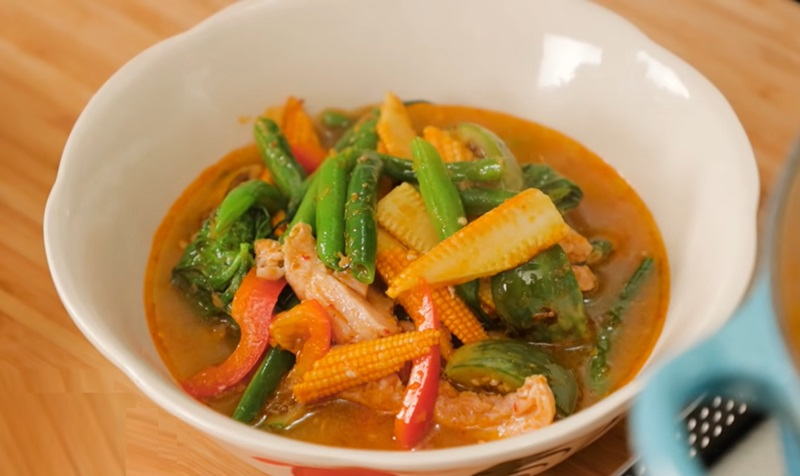
Kaeng pa, a unique Thai curry hailing from the lush forested regions of Thailand, stands out as a distinctive culinary creation. Unlike many traditional Thai curries, kaeng pa takes a bold departure by forgoing coconut milk, a departure rooted in the absence of naturally occurring coconuts in the rainforests of northern Thailand. This omission not only contributes to the curry's distinctive taste but also positions it as a fitting choice for those seeking low-saturated-fat diets.
Known for its highly spicy and watery consistency, kaeng pa tantalizes the taste buds with an array of flavorful ingredients. Lemongrass, galangal, green peppercorns, kaffir lime peel and leaves, pea eggplant, garlic, and chili infuse the curry with a symphony of aromas and tastes. While its origins can be traced back to wild boar preparations, modern variations often feature pork or chicken as the protein base.
The absence of coconut in traditional kaeng pa underscores the culinary adaptability found in Thailand, where regional ingredients and preferences shape diverse and captivating dishes. This curry, with its bold flavors and nod to the forested landscapes, adds a unique chapter to the rich tapestry of Thai cuisine.
Phat Phrik Khing
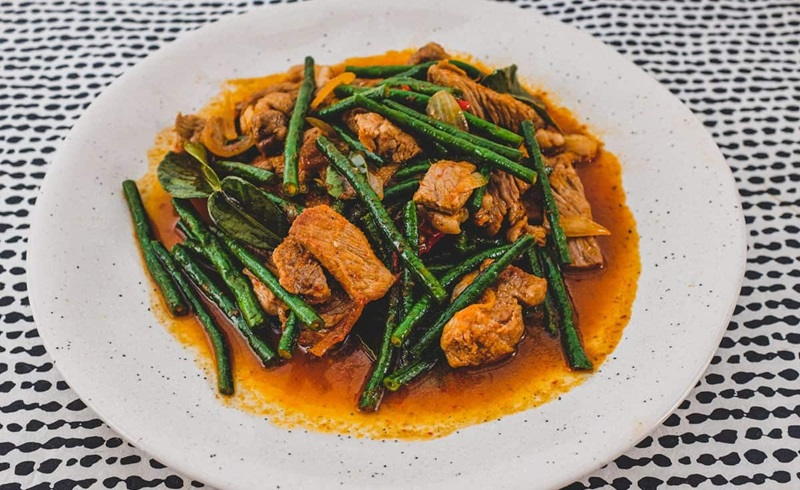
Phat phrik khing, also known as pad prik king, emerges as a distinctive Thai curry celebrated for its unique dryness compared to other Thai counterparts like red curry. Its characteristic feature is its preparation, involving frying in oil without the addition of liquid coconut milk, setting it apart in both texture and flavor. In some variations, coconut milk is heated until it transforms into oil, contributing an extra layer of richness to the dish.
The curry paste, known for its vivid red hue owing to the chili peppers (phrik), boasts a tantalizing mix of flavors. Interestingly, despite the Thai name's reference to ginger (khing), the actual dish doesn't contain ginger. Instead, recipes typically incorporate garlic, lemongrass, and galangal, while some variations may use red curry paste for added depth. Phat phrik khing stands as a testament to Thai culinary creativity, showcasing the diverse ways in which flavors are harmonized to create a delightful and aromatic dish.
Kaeng Hang Le
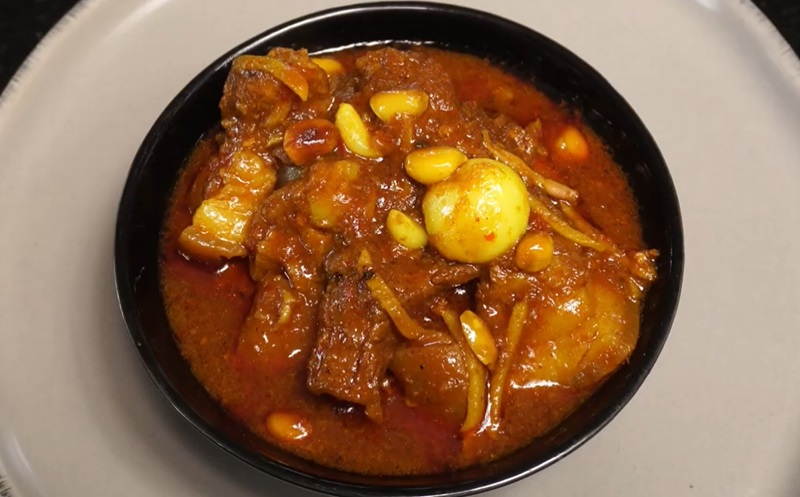
Kaeng hang le, a sumptuous Northern Thai pork curry, has carved its niche as a beloved specialty in the region's culinary landscape. Distinguished by several unique characteristics, this curry stands out from traditional northern Thai counterparts. Notably, it is paired with long-grained rice rather than the customary sticky rice, offering a distinctive dining experience.
One of the key features that set kaeng hang le apart is the incorporation of dried spices, a departure from the usual spices used in northern Thai curries. This infusion of dried spices, reminiscent of Burmese culinary influences, imparts a nuanced flavor profile to the dish, creating a delightful blend of regional tastes.
Frequently savored during festive occasions in northern Thailand, kaeng hang le becomes a centerpiece, captivating the palates of those who indulge in its rich and aromatic goodness. With its unique combination of ingredients and cultural influences, this Northern Thai pork curry exemplifies the dynamic and diverse nature of Thai cuisine, showcasing the region's ability to embrace varied culinary traditions while crafting dishes that resonate with both locals and global enthusiasts.
Kaeng Tai Pla
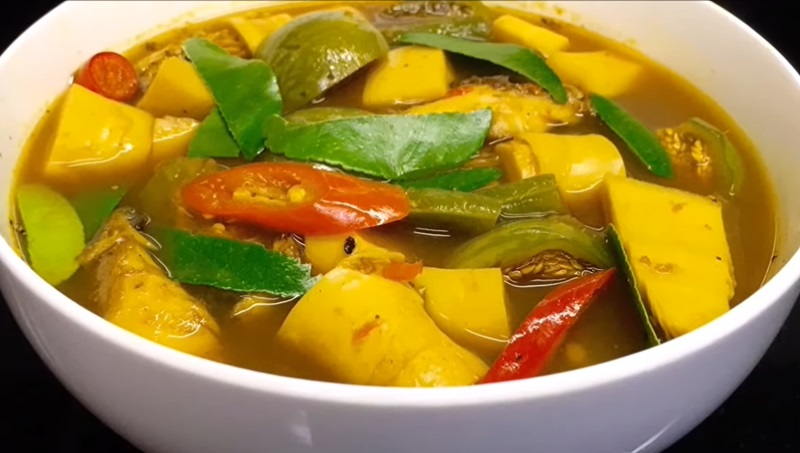
Kaeng tai pla, a culinary gem hailing from southern Thai cuisine, derives its name from the distinctive tai pla sauce. This sauce, crafted from fermented fish entrails, imparts a pungent aroma and robust flavor that defines the essence of this curry.
The signature characteristic of kaeng tai pla lies in its intense and aromatic profile, making it a unique experience for those seeking bold and complex flavors. The curry is traditionally accompanied by a selection of fresh vegetables presented on a separate plate, offering a delightful contrast in textures.
Served alongside steamed rice, kaeng tai pla embodies the rich culinary tapestry of southern Thai cuisine. The combination of savory tai pla sauce, vibrant vegetables, and fragrant rice creates a harmonious dining experience that showcases the region's culinary prowess and the art of balancing distinct flavors in a single, satisfying dish.
Kaeng Phrik Kraduk Mu
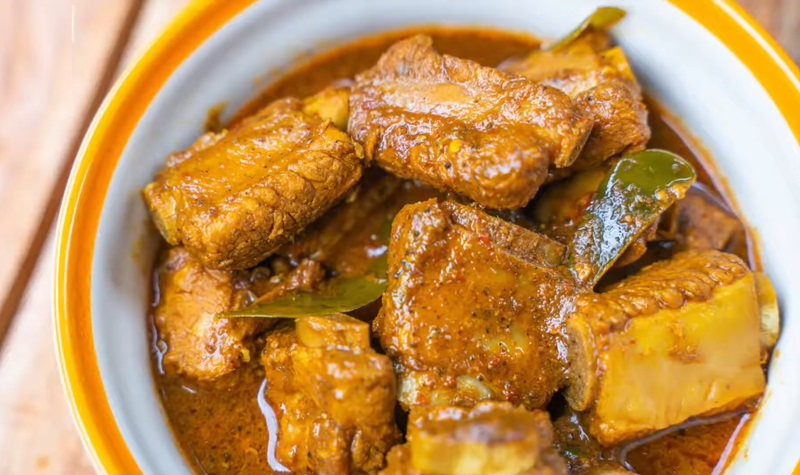
Kaeng phrik kraduk mu, a cherished Thai curry from the southern regions, stands out for its unique culinary characteristics. Resonating with the essence of southern Thai cuisine, this curry shares similarities with Kaeng pa by omitting coconut milk from its composition. However, it distinguishes itself by incorporating turmeric in place of galangal, contributing to its distinct flavor profile.
Celebrated for its popularity in Southern Thailand, kaeng phrik kraduk mu showcases the region's culinary expertise and cultural culinary variations. The absence of coconut milk allows the vibrant flavors of turmeric and other spices to shine, creating a curry that is bold, aromatic, and deeply rooted in the culinary traditions of southern Thai communities. This curry, enjoyed with steamed rice, encapsulates the art of crafting flavorful dishes that define the rich gastronomic heritage of Thailand's diverse culinary landscape.
Thai Chicken Curry
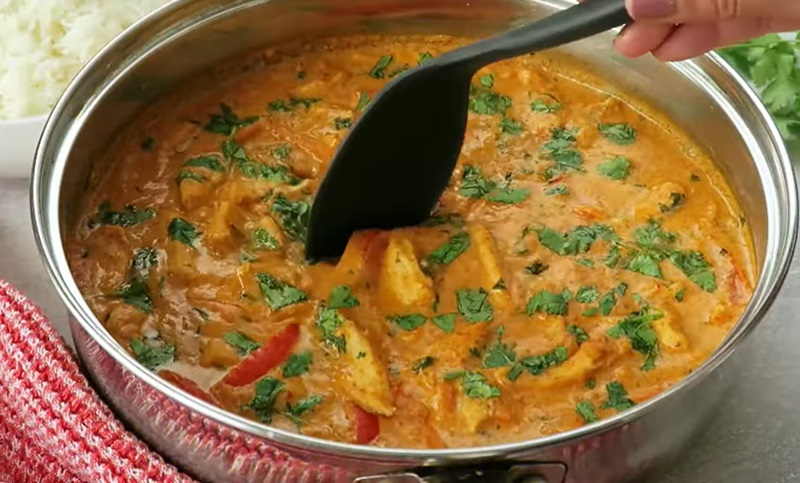
Thai Chicken Curry, a culinary gem from Thailand, captivates taste buds with its harmonious blend of aromatic herbs and rich, coconut-infused broth. This beloved dish embodies the essence of Thai cuisine, offering a balance of sweet, spicy, and savory flavors. The heart of the curry lies in the fragrant curry paste, typically crafted from a medley of ingredients like lemongrass, galangal, garlic, shallots, and an array of spices. The curry paste is then simmered in creamy coconut milk to create a luscious base for the dish.
The addition of tender chicken pieces allows the curry to absorb the bold flavors, while vegetables like bell peppers, bamboo shoots, and Thai basil contribute a vibrant array of colors and textures. Thai Chicken Curry is known for its versatility, with variations like Green Curry, Red Curry, and Massaman Curry gracing tables. The final touch often involves a squeeze of lime and a sprinkle of fresh cilantro, enhancing the complexity of flavors.
Whether enjoyed with fragrant jasmine rice or silky rice noodles, Thai Chicken Curry stands as a testament to Thailand's culinary prowess, offering a journey through a symphony of tastes that has made it a global favorite.
Gulai
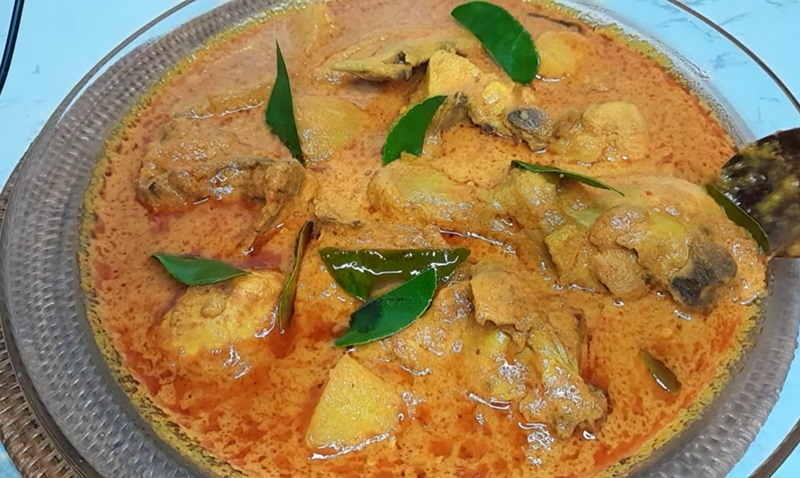
Gulai, an esteemed culinary creation, is a delectable and spicy stew that has become a cornerstone of the region's rich gastronomic tapestry. This dish reflects the diverse and vibrant flavors intrinsic to Southeast Asian cuisine, showcasing a harmonious blend of spices, proteins, and vegetables.
The heart of gulai lies in its distinctive sauce—a luscious, thick concoction boasting a golden hue attributed to the generous use of ground turmeric. The sauce is a symphony of flavors, incorporating galangal, ginger, chili pepper, coriander, black pepper, lemongrass, cinnamon, caraway, shallot, garlic, and fennel, all meticulously ground into a flavorful paste. This aromatic blend is then expertly married with the velvety richness of coconut milk, creating a sauce that envelops the main ingredients in a luxurious and fragrant embrace.
Gulai is versatile, accommodating an array of proteins such as goat meat, beef, fish, mutton, poultry, and seafood. Vegetables like unripe jackfruit, cassava leaves, and banana stem contribute to the dish's complexity and depth. With its captivating combination of spices and textures, gulai stands as a testament to the culinary prowess of the region, captivating palates and embodying the cultural richness of Southeast Asia.
Kaeng Som
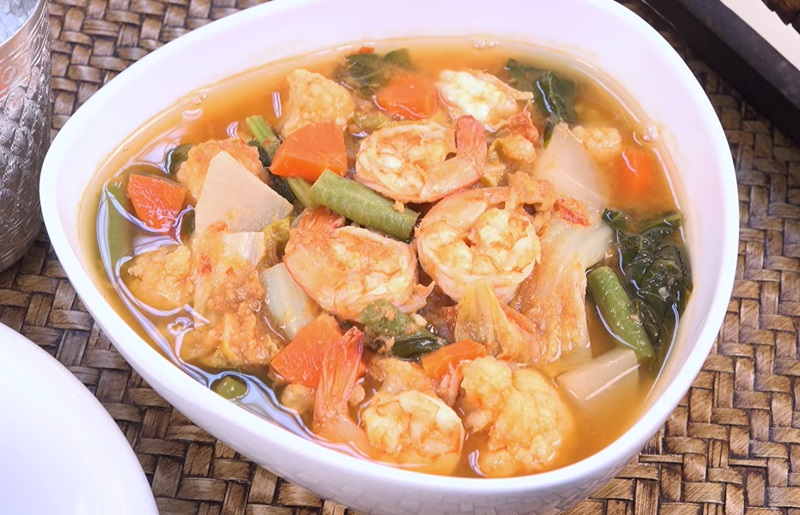
Kaeng som, also known as gaeng som or Thai/Lao/Malaysian sour curry, stands out as a tantalizing sour and spicy soup or fish curry celebrated across Southeast Asia. The defining characteristic of this curry lies in its distinctive sour taste, derived from the infusion of tamarind (makham). The recipe expertly balances this sour note by incorporating palm sugar, adding a touch of sweetness to the overall flavor profile.
Renowned for its vibrant and bold taste, kaeng som boasts a rich assortment of vegetables that further enhance its complexity. As a culinary masterpiece, this curry captures the essence of Southeast Asian cuisine, where the harmonious interplay of flavors creates a memorable dining experience. Whether enjoyed in Thailand, Laos, Malaysia, or other regions, kaeng som reflects the diverse culinary traditions that make Southeast Asian cuisine a global favorite.
Shrimp Curry (Prawn Curry)
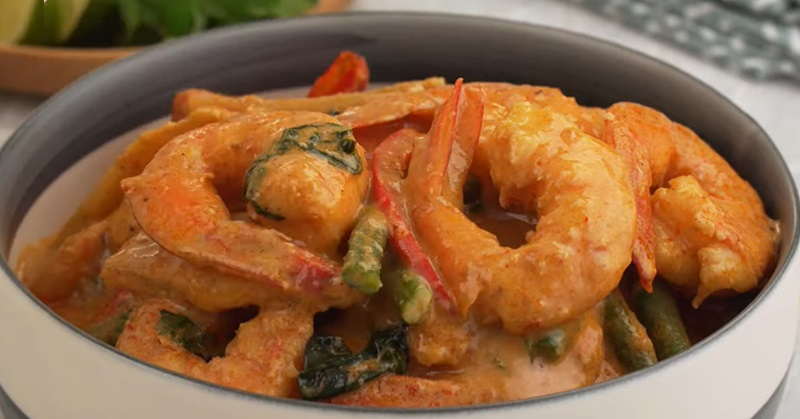
Shrimp curry, also recognized as prawn curry, is a culinary masterpiece celebrated for its delectable infusion of flavors and vibrant presentation. This dish features succulent shrimp bathed in a luxurious, thick sauce, boasting a tantalizing yellow hue that beckons to the richness within.
The essence of shrimp curry lies in its expertly crafted blend of ingredients, each contributing to the symphony of tastes that define this Southeast Asian delight. Grated coconut, coriander, turmeric, cumin, garlic, and the tangy notes of tamarind form the foundation of the curry, elevating the shrimp to new heights of gastronomic pleasure. The addition of vinegar and a hint of sweetness from sugar, along with the bold kick of chili, imparts complexity to the sauce.
Accompanied by the subtle flavors of onion and seasoned with salt, shrimp curry becomes a culinary adventure that dances on the palate. This luscious creation is traditionally served with steaming white rice, creating a harmonious union that showcases the versatility and appeal of this curry in various Southeast Asian cuisines. Shrimp curry is a testament to the region's culinary artistry, captivating food enthusiasts with its irresistible blend of spices and textures.


